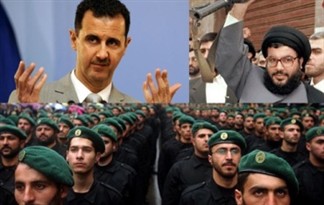The region crumbles and Lebanon trembles
Michael Young/The Daily Star/Feb. 19, 2015
As prospects for the emergence of new sectarian and ethnic entities rise in the Middle East to replace illegitimate, authoritarian states, it is necessary to ask what will happen to Lebanon, the only Arab state that has sought to build its political system around a formula for sectarian compromise.
Lebanon’s most pressing danger is the presence of some 1.5 million Syrian refugees in the country, most of them Sunnis from areas the Assad regime considers vital for its political survival. Many have fled Homs and Qalamoun, which sit on vital communication lines between Damascus and the coast. These are both places the regime intends to retain, even as it has given up on far-flung districts that it has no real hope of controlling, such as Syria’s north, northeast and east.
Bringing back hundreds of thousands of Sunnis to Homs and its environs, the vulnerable neck of Bashar Assad’s “useful Syria,” is not something the regime in Damascus intends to do, amid rumors that the Iranians have resettled friendlier Shiite populations there from outside Syria and even the region. So, what happens to most of the refugees now in Lebanon?
Developments don’t offer much of an answer, let alone provoke optimism. Barring a major victory by the regime to retake all of Syria, which seems highly unlikely, the country will continue to fragment. Illustrating this, Syria’s Kurds last Friday declared their intention of pursuing the “geographic and political unity” of Kurdish areas in the context of a “federal state.” Under the circumstances, however, that is less than what they hope to achieve – indeed what is achievable – namely a virtually independent Kurdish entity in a very loose state structure.
Is the permanent settlement of Syrian refugees in Lebanon a possibility, as some Lebanese have warned? Certainly it is, and what is more worrisome is that there are those Lebanese willing to go along with such a project, seeing that it will boost Sunni demographics at the expense of Shiites. International humanitarian organizations have insisted that Lebanon is obliged to care for the refugees, but have given scant attention to the long-term, political implications of their presence.
That is not to justify the disgraceful calls to expel the refugees, itself an utterly unrealistic option in light of the vast numbers involved. However, Lebanon must start raising international awareness of the lasting repercussions of the Syrian refugee presence, particularly in light of the problems accompanying the Palestinian refugee presence in Lebanon after 1948.
It took nearly two decades for the Palestinian refugees to be mobilized politically, and the consequences were devastating for the Lebanese. The possibility of this happening again with Syrians is infinitely more worrisome. If the refugees come to form the core of a new insurgency operating from outside Syria, Lebanon would very quickly be caught up in the maelstrom.
However, one factor alone plays in Lebanon’s favor. Iran has helped provoke Syria’s fragmentation – no less than Iraq’s – believing that its influence is much easier to exercise in an Arab world broken up into countless ministates. But those who could be expected to lose most from the massive rise in the Sunni population in Lebanon are Shiites, and it is doubtful that the Iranians or Hezbollah would welcome this.
So what are the options for Assad, Tehran and Hezbollah? To eventually allow a return of Sunnis to Syria, but then to ensure that they will not resettle in the strategic Homs and Qalamoun areas from where they originate? Perhaps, but how easy is that? After engaging in ethnic cleansing in those areas in recent years, the regime would have to do so again, this time pushing the population into parts of Syria where Sunnis are a majority and over which today only ISIS has some control. This would not only be complicated, it would be no solution at all.
Populations are not sacks of potatoes. As the regime’s intent becomes clearer, the refugees will understandably resist it and many will refuse to leave Lebanon. Ultimately, the thinking may be that if a Sunni ministate emerges in Iraq, a broader Sunni state between Iraq and Syria may attract rural Syrian Sunnis. However, such a view smacks of wishful thinking and hubris, and may well perpetuate sectarian conflict in Syria indefinitely. Worse, from Lebanon’s perspective it may heighten domestic sectarian hostility, damaging communal relations.
The simple fact is that there is no good solution to the Iranian and Syrian regimes’ efforts to engage in durable sectarian cleansing in Syria. All scenarios are either unrealistic, flawed or damaging to those most closely allied with Tehran.
Beyond that, the millions of Syrians in Lebanon, Jordan and Turkey are a potential reservoir of difficulties not only for the region but also for the international community. A consequence of Sunni alienation in Iraq was ISIS; the Syrian refugees present risks far more perilous, as millions of people without a future, a territory, an anchor are circulating among fragile countries already at their limits in coping with the present situation.
That the international community – starting with Europe, the United States, the Arab countries, and Russia – has been less than useless with regard to the Syrian refugees is self-evident. Nor have they taken any measures against those exacerbating the refugees’ terrible predicament, namely the Syrian regime and Iran. But the problem will not go away; it will only get worse for everyone. It’s past time for the world to wake up.
Michael Young is opinion editor of THE DAILY STAR. He tweets @BeirutCalling.


















